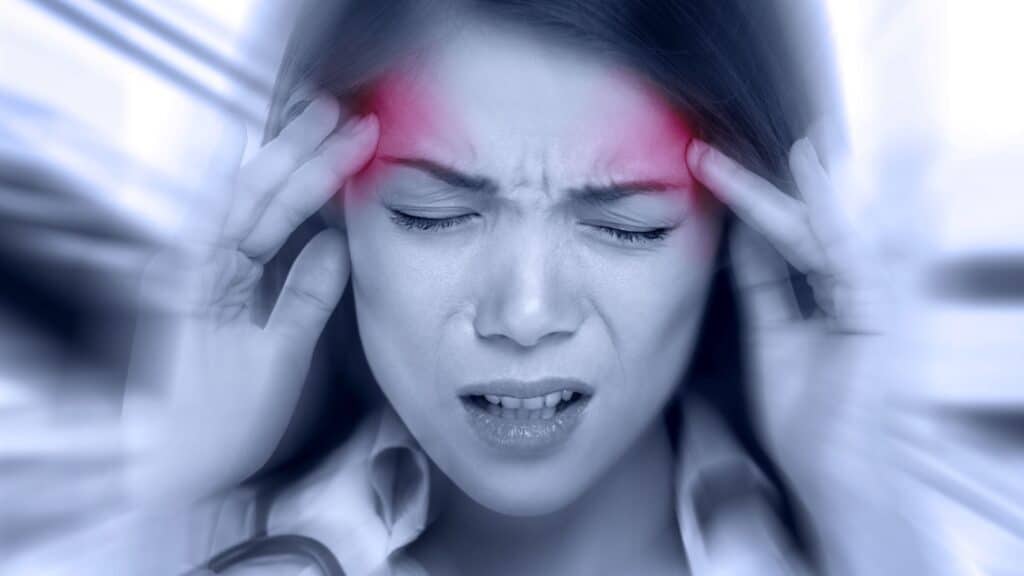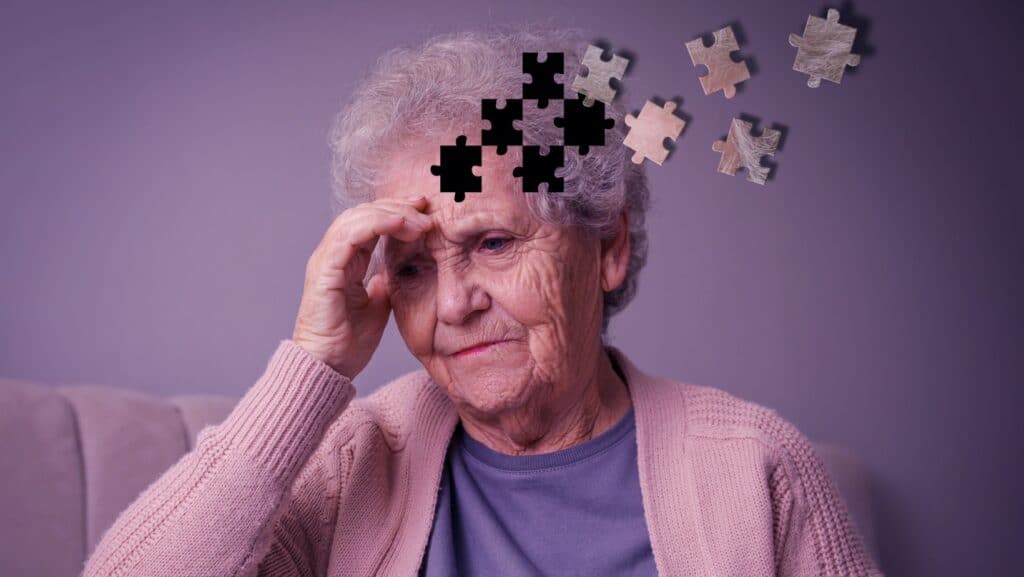10 Stroke Symptoms Americans Ignore All the Time
Strokes are a leading cause of disability and death in the United States, yet many Americans still overlook critical warning signs. According to the Centers for Disease Control and Prevention (CDC), someone in the U.S. has a stroke every 40 seconds, and it’s estimated that around 800,000 people experience a stroke each year. Early detection and prompt medical treatment are essential, as timely intervention can significantly reduce the risk of severe complications or death. This article highlights 10 often-ignored stroke symptoms and explains why recognizing them is crucial.
1. Sudden Vision Problems

A stroke can impact the brain’s ability to process visual information, leading to sudden vision issues such as blurred or double vision, or even temporary loss of sight in one or both eyes. These changes may occur without pain and are easy to dismiss as temporary. According to the American Stroke Association, vision problems are an early warning sign that should not be ignored.
2. Unexpected Fatigue or Weakness

Feeling unusually tired or weak on one side of the body could be an early indication of a stroke. This symptom is often misattributed to physical exhaustion or overwork. The Mayo Clinic reports that this kind of fatigue may be accompanied by numbness, especially on one side of the face or body.
3. Difficulty Speaking or Understanding Speech

Slurred speech or trouble understanding simple sentences can signal a stroke. This symptom occurs when the stroke affects the language centers of the brain. A sudden inability to communicate should never be ignored, even if it resolves quickly. According to the National Institutes of Health (NIH), this is a key warning sign that requires immediate attention.
4. Severe Headaches with No Known Cause

A sudden, severe headache—often described as the “worst headache of your life”—can be a symptom of a stroke, particularly if it occurs along with other symptoms like dizziness or confusion. The American Heart Association notes that these headaches may be accompanied by vomiting and are often misdiagnosed as migraines.
5. Sudden Nausea or Vomiting

Unexpected nausea or vomiting, especially when paired with other stroke symptoms such as dizziness or trouble walking, could indicate a stroke. This is more common in women and can be easily dismissed as food poisoning or a stomach bug. The Cleveland Clinic advises seeking emergency care if these symptoms arise without an obvious cause.
6. Difficulty Walking or Loss of Balance

Feeling unsteady, dizzy, or having trouble walking could be signs of a stroke. Sudden loss of coordination, stumbling, or falling are common symptoms that many people dismiss as being tired or clumsy. The American Stroke Association emphasizes that this symptom should always be evaluated, especially when accompanied by other signs.
7. Sudden Confusion or Memory Problems

Confusion, disorientation, or sudden memory lapses may be subtle indicators of a stroke. People often attribute these issues to stress or aging, but the NIH warns that sudden cognitive changes should not be ignored, particularly if they occur with other symptoms like difficulty speaking or visual problems.
8. Facial Drooping

One of the most recognized symptoms of a stroke is facial drooping, particularly on one side. This symptom may be accompanied by an inability to smile or close the eye on the affected side. The CDC recommends using the FAST (Face, Arms, Speech, Time) test to quickly evaluate this symptom and others for potential stroke.
9. Pain or Discomfort in the Face, Arm, or Leg

Stroke-related pain is uncommon but can manifest as sudden discomfort in the face, arm, or leg. This symptom is often overlooked, especially in women. According to a study published in the Journal of the American Heart Association, women are more likely to report non-traditional symptoms, such as pain, during a stroke.
10. Trouble Swallowing

Difficulty swallowing, known as dysphagia, is a lesser-known but significant stroke symptom. It can result from damage to the areas of the brain that control the muscles needed for swallowing. This issue can lead to choking or aspiration pneumonia if not treated promptly. Johns Hopkins Medicine notes that dysphagia can be an early indicator of a stroke and should be assessed by a healthcare professional immediately.
Conclusion

Strokes can present themselves in many different ways, making it easy to overlook or misinterpret symptoms. Awareness and quick response are key to minimizing damage and improving outcomes. If you or someone around you experiences any of these symptoms, seek immediate medical assistance. Remember to act FAST—Face drooping, Arm weakness, Speech difficulty, and Time to call 911. Recognizing these signs can save lives and reduce the long-term impact of a stroke.
10 Early Signs of Dementia That Americans Ignore All the Time

Dementia is a progressive neurological condition that affects millions of Americans, often going unnoticed in its early stages. According to the Centers for Disease Control and Prevention (CDC), dementia is not a single disease but a general term for a decline in cognitive ability severe enough to interfere with daily life. Alzheimer’s disease is the most common cause of dementia, accounting for 60-80% of all cases. Recognizing the warning signs can lead to earlier diagnosis and better outcomes. Here are 10 symptoms that Americans frequently overlook, along with credible sources for further information.
READ: 10 Early Signs of Dementia That Americans Ignore All the Time
Peanut Allergies on the Rise: What Every Parent Needs to Know

Peanut allergies are one of the most common food allergies, especially in children. Approximately 1-2% of the population in Western countries is affected by peanut allergies, with rates appearing to increase over the last few decades. Studies show that in the United States, peanut allergy prevalence among children rose from 0.4% in 1997 to 1.8% in 2010, though the rate of increase may be slowing.
READ: Peanut Allergies on the Rise: What Every Parent Needs to Know
Colorectal Cancer Rising Among Millennials and Gen Z: 5 Essential Ways to Protect Yourself

Colorectal cancer, once considered a disease predominantly affecting older adults, is increasingly being diagnosed in people under 50. This alarming trend has significant implications for Millennials and Gen Z. We explore the factors contributing to this rise and provide five crucial strategies to safeguard your health.
READ: Colorectal Cancer Rising Among Millennials and Gen Z: 5 Essential Ways to Protect Yourself
Why Do Mosquitos Seem To Like Me So Much, and What Can I Do About It?

Have you ever wondered why mosquitoes seem to prefer biting some people over others? Understanding the reasons behind this can help in mitigating their impact. Mosquitoes are attracted to certain individuals due to factors like body odor, carbon dioxide, and body heat. These pests are not just annoying; they can also carry dangerous diseases such as malaria, dengue fever, and Zika virus. In this article, we explore why mosquitoes are drawn to specific people, the health risks they pose, and effective strategies to protect yourself from their bites.
READ: Why Do Mosquitos Seem To Like Me So Much, and What Can I Do About It?
Is There A Link Between Being A ‘Good Girl’ And Autoimmune Disease In Women?

Women Rising®, an 11x award-winning women’s empowerment and media company founded by autoimmune-diagnosed, 15x award-winning documentary filmmaker, Sara Hirsh Bordo, recently released findings from Autoimmunity and the “Good Girls” ™ the first-ever sociological survey exploring the intersection between empowerment and autoimmunity in American women. READ: Is There A Link Between Being A ‘Good Girl’ And Autoimmune Disease In Women?
Join Us

Join us on this empowering journey as we explore, celebrate, and elevate “her story.” The Queen Zone is not just a platform; it’s a community where women from all walks of life can come together, share their experiences, and inspire one another. Welcome to a space where the female experience takes center stage. Sign up for our newsletter so you don’t miss a thing, Queen!







